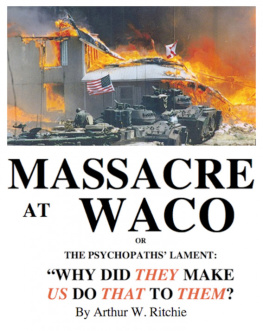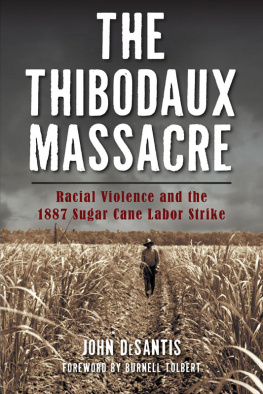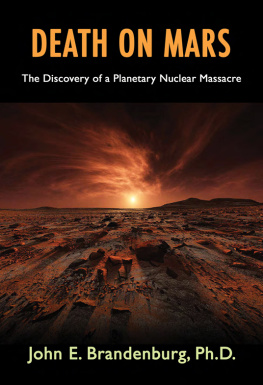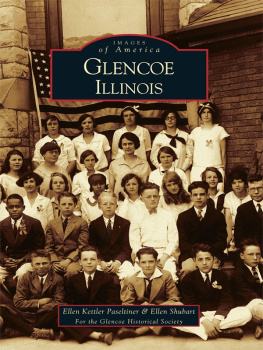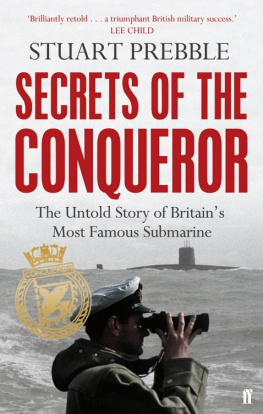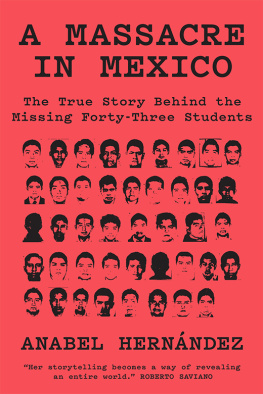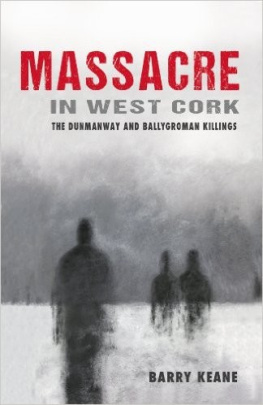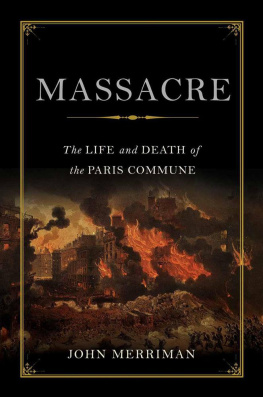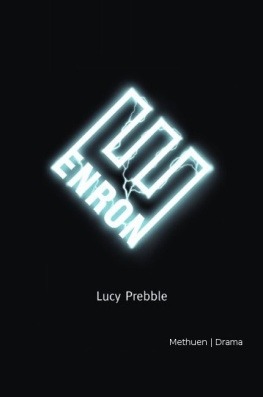John Prebble - Glencoe: The Story of the Massacre
Here you can read online John Prebble - Glencoe: The Story of the Massacre full text of the book (entire story) in english for free. Download pdf and epub, get meaning, cover and reviews about this ebook. publisher: Penguin Books Ltd, genre: Detective and thriller. Description of the work, (preface) as well as reviews are available. Best literature library LitArk.com created for fans of good reading and offers a wide selection of genres:
Romance novel
Science fiction
Adventure
Detective
Science
History
Home and family
Prose
Art
Politics
Computer
Non-fiction
Religion
Business
Children
Humor
Choose a favorite category and find really read worthwhile books. Enjoy immersion in the world of imagination, feel the emotions of the characters or learn something new for yourself, make an fascinating discovery.

- Book:Glencoe: The Story of the Massacre
- Author:
- Publisher:Penguin Books Ltd
- Genre:
- Rating:3 / 5
- Favourites:Add to favourites
- Your mark:
- 60
- 1
- 2
- 3
- 4
- 5
Glencoe: The Story of the Massacre: summary, description and annotation
We offer to read an annotation, description, summary or preface (depends on what the author of the book "Glencoe: The Story of the Massacre" wrote himself). If you haven't found the necessary information about the book — write in the comments, we will try to find it.
Glencoe: The Story of the Massacre — read online for free the complete book (whole text) full work
Below is the text of the book, divided by pages. System saving the place of the last page read, allows you to conveniently read the book "Glencoe: The Story of the Massacre" online for free, without having to search again every time where you left off. Put a bookmark, and you can go to the page where you finished reading at any time.
Font size:
Interval:
Bookmark:
PENGUIN BOOKS
GLENCOE
John Prebble was born in Middlesex in 1915 but spent his boyhood in Saskatchewan, Canada. He became a journalist in 1934 and is now a historian, novelist, film-writer and the author of several highly praised plays and dramatized documentaries for BBC television and radio. During the war he served for six years in the ranks with the Royal Artillery and later wrote a war novel, The Edge of Darkness, based on his experiences. He is the author of Age Without Pity, The Mather Story, The High Girders, an account of the Tay Bridge Disaster, The Buffalo Soldiers, which won an award in the United States for the best historical novel of the American West, and Culloden, a subject he became interested in when he was a boy in a predominantly Scottish township in Canada. Culloden was subsequently made into a successful television film. His other books include The Highland Clearances (1963), Glencoe (1966), The Darien Disaster (1968), The Lion in the North (1971), Mutiny: Highland Regiments in Revolt (1975), John Prebble's Scotland (1983), The King's Jaunt (1988) and Landscapes and Memories: an intermittent autobiography for which he was awarded the McVitie Prize for Scottish Writer of the Year, 1993. Many of his books are published by Penguin.
JOHN PREBBLE
THE STORY OF THE MASSACRE
Let it be secret and sudden

PENGUIN BOOKS
PENGUIN BOOKS
Published by the Penguin Group
Penguin Books Ltd, 80 Strand, London WC2R 0RL, England
Penguin Putnam Inc., 375 Hudson Street, New York, New York 10014, USA
Penguin Books Australia Ltd, 250 Camberwell Road, Camberwell, Victoria 3124, Australia
Penguin Books Canada Ltd, 10 Alcorn Avenue, Toronto, Ontario, Canada M4V 3B2
Penguin Books India (P) Ltd, 11 Community Centre, Panchsheel Park, New Delhi 110 017, India
Penguin Books (NZ) Ltd, Cnr Rosedale and Airborne Roads, Albany, Auckland, New Zealand
Penguin Books (South Africa) (Pty) Ltd, 24 Sturdee Avenue, Rosebank 2196, South Africa
Penguin Books Ltd, Registered Offices: 80 Strand, London WC2R 0RL, England
www.penguin.com
First published by Martin Secker & Warburg Ltd 1966
Published in Penguin Books 1968
Copyright John Prebble, 1966
All rights reserved
Except in the United States of America, this book is sold subject to the condition that it shall not, by way of trade or otherwise, be lent, re-sold, hired out, or otherwise circulated without the publisher's prior consent in any form of binding or cover other than that in which it is published and without a similar condition including this condition being imposed on the subsequent purchaser
ISBN: 978-0-14-002897-3
FOR JOHN ROSS PREBBLE
I HAVE written this book because its story is, in a sense, a beginning to what I have already written about Culloden and the Clearances the destruction of the Highland people and their way of life. The Massacre of Glencoe is commonly thought to have been a bloody incident in a meaningless feud between Campbell and MacDonald, which it was not. On a higher level, it is also thought to have been incidental to the political events of its time, an accident of judgement almost, whereas it was the product of them. It can be understood only within a knowledge of the Highlander's resistance to an alien southern government. The quarrel between Clan Donald and Clan Campbell was a rivalry for the leadership of Gaeldom, embittered by the Campbells' growing support for that government.
The Highland people were once the majority of Scotland's population, a military society that had largely helped to establish and maintain her monarchy. This society, tribal and feudal, could not change itself to meet a changing world, nor did it wish to. Its decline became more rapid in the second half of the seventeenth century, and within a hundred and fifty years its people had been driven from their mountains. By 1690 the Highlanders were already regarded by many Lowlanders as an obstacle to the complete political union of England and Scotland, and their obstinate independence of spirit expressed in their customs, their clothes and their language had to be broken and humbled. The MacDonalds of Glencoe were early victims of what the Highlanders called Mi-run mor nan Gall, the Lowlander's great hatred. Lowland leaders naturally despised what they wished to destroy, and therefore that destruction seemed to be a virtuous necessity. No Scots or English statesman would have thought of ordering the extirpation of a Lowland or English community, but a Highland clan, particularly one of the Gallows Herd, was a different matter. One of the principals involved in the Massacre said afterwards, It's not that anybody thinks that the thieving tribe did not deserve to be destroyed It was only regrettable that the murder of men, women and children should have been carried out in a dishonourable way.
The same contempt for the Highlander was responsible for the brutalities that followed Culloden in 1746, and the same indifference to his way of life was shown when the Clearances began fifty years later. In the end Mi-run mor nan Gall was triumphant.
The story has a relevance for us. Our age has seen a monstrous attempt at genocide, and we have had to determine the moral responsibility of those who carried it out under orders.
October, 1965
JOHN PREBBLE
THE WESTERN HIGHLANDS
GLENCOE
It will be a proper vindication of the public justice
T HERE were boats on Loch Leven when John Forbes reached the narrows at Ballachulish. They lay like curled leaves on the dark water, high at the stem and stern, and almost motionless as the oarsmen pulled against the drag of the tide and the tug of the wind. They were ferrying soldiers across from Carness, and when Forbes saw the slant of pikes and the burnished barrels of muskets his memory stirred uneasily. At first there was nothing by which he could identify the soldiers, only the scarlet of their coats in the winter's grey light. Riding closer to the ferry he saw the boar's-head badge on their bonnets, the green plaids in which some of them were wrapped, and he recognized them as men of the Earl of Argyll's Regiment of Foot. When the first files waded through the shallows and formed up with their faces toward Glencoe he felt more uneasy still.
Tired, and anxious to be at Fort William before nightfall, he waited impatiently for an empty boat to take him over to the north shore. The sky promised more snow. Bad weather had already delayed his passage from Edinburgh to the lonely garrison in the Great Glen. In the best of seasons it was not a ride he enjoyed. In winter it meant eight days or more in the saddle and was the most troublesome journey that I ever take. Wild men in the Central Highlands, outlaws or Rebels, made the shortest route hazardous, and he was forced to travel by way of Glasgow and Dumbarton, then northward across Loch Long and Loch Fyne, coming through Appin to Fort William like a tinker to the back door. Even thus, when he brought the garrison its pay (too infrequently, the semi-mutinous soldiers were always complaining), he had to rely upon the armed protection of Argyllshire lairds to see him safely through those glens infested with broken men of Clan Gregor or Clan Donald.
An eager and ambitious man, with a beaked nose and pale, proud eyes, John Forbes was bitterly resentful of service in the Highlands when other young men had the good fortune to campaign in Flanders. For the most part he kept this hurt to himself, and when he did speak of it to his brother, the Laird of Culloden, he tempered it by adding I pay my pains with the satisfaction of serving my King and Country. Three years earlier, in the summer of 1689, there had been some substance to this satisfaction. Then, as a captain of an independent company, he had commanded Ruthven Castle for King William III and the Protestant Revolution. Besieged there by an army of Jacobite clans under Viscount Dundee he shouted boyish defiance from the walls, though probably in words less theatrical than those put into his mouth later by a classical-minded contemporary: I, a Forbes, hold this castle for the Prince of Orange, and for him will I hold it while the gods permit! The support of the gods was no stronger than the slender resources of his garrison, but he enjoyed three days of such heroics before surrendering to Dundee's cannon and the scaling-ladders of the MacDonalds. Since that was a year when most of King William's Scottish soldiers were running in panic before those of his father-in-law King James, this brief stand at Ruthven was regarded as highly creditable. Yet it had required all the strenuous influence of the Laird of Culloden, and of John Hill the Governor of Fort William, to squeeze from the King a commission in Hill's Regiment. Now, as he dismounted by the ferry and frowned at the Argyll men, Forbes wore a major's crimson sash and white shoulder-knots beneath his blue cloak.
Next pageFont size:
Interval:
Bookmark:
Similar books «Glencoe: The Story of the Massacre»
Look at similar books to Glencoe: The Story of the Massacre. We have selected literature similar in name and meaning in the hope of providing readers with more options to find new, interesting, not yet read works.
Discussion, reviews of the book Glencoe: The Story of the Massacre and just readers' own opinions. Leave your comments, write what you think about the work, its meaning or the main characters. Specify what exactly you liked and what you didn't like, and why you think so.


